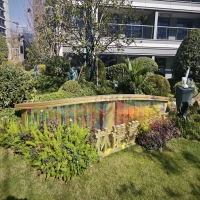Welcome to the website for landscape facilities products and knowledge.
How do landscape tables in outdoor research parks support translational research?
Landscape tables in outdoor research parks play a pivotal role in advancing translational research by creating dynamic spaces that bridge the gap between laboratory discoveries and real-world applications. These thoughtfully designed tables, often situated amidst greenery, encourage spontaneous interactions among scientists, engineers, and clinicians—fostering interdisciplinary collaboration essential for turning theoretical insights into practical solutions.
Unlike traditional indoor workspaces, landscape tables offer a refreshing environment that stimulates creativity and reduces mental fatigue. The natural surroundings have been shown to enhance cognitive function, enabling researchers to approach complex problems with renewed perspective. Many breakthrough ideas in fields like biomedicine, environmental science, and urban planning have emerged from casual conversations at these outdoor hubs.
The design of landscape tables often incorporates features that support research activities, such as integrated power outlets for laptops, weather-resistant surfaces for prototyping, and adaptable configurations for group discussions. This seamless blend of functionality and nature creates an ideal setting for translational research, where the boundaries between different scientific disciplines naturally dissolve.
Moreover, these outdoor workspaces facilitate community engagement by providing accessible venues where researchers can interact with stakeholders, potential investors, and the general public. This transparency accelerates the translation of research findings into tangible innovations that address societal challenges.
By combining the rigor of scientific inquiry with the inspiration of natural environments, landscape tables in research parks have become catalysts for groundbreaking discoveries that move swiftly from bench to bedside, lab to market, and theory to practice. Their growing popularity underscores the importance of designing research spaces that nurture both intellectual exchange and human well-being.
Related search:

Recommendation
Metal and acrylic color-changing combined curtain wall for large-scale public landscape facilities